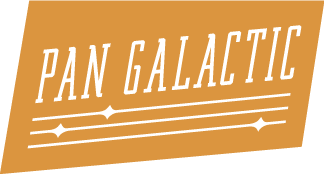All blogs have one thing in common. It doesn’t matter if you’re dispensing medical advice or recipes, trying to pique an interest in your product or service, or looking to enhance your photography career by showcasing your portfolio, every single blogger on the planet wants to be read.
That means, whether your blog is personal or business directed, you want to reach as wide an audience as possible. That is one challenging task on the Internet, where blogs are a dime-a-dozen. You need to laser point those potential readers, pull them in and keep them coming back. Now that last part is totally up to you. If your content has the right stuff, they’ll Like, Share and link to you, helping to build that all important readership.
Those first two steps are going to require a little more finesse. As anyone that’s spent 20 seconds on the Internet knows, it’s all about the search engines. If you want to be read, you have to be found and those search engines are pretty much the strongest commodity the web offers for that purpose.
Unfortunately, the majority of us know nothing about blog SEO. We grab an awesome blog template and create something of Hollywood production quality. We upload and wait for the audience to grow to Huffington Post numbers. Even those of us that know about blog SEO don’t know necessarily how to use it effectively. So you have this absolutely fantastic blog that would bring a tear to the Predator but no one seems to be reading it.
Remember, search engines are the veins that flow blood to your blog. When your blog SEO is nailed, you ensure users can find it. Here is a checklist you should follow to optimize your blog for both readers and search engines.
Carefully Build Your Social Media Profile.
In today’s digital environment, there is no better way to grow your presence on the Internet. Some studies indicate that Google looks to social media to indicate a blog’s relevance and authority. People Tweet, Like, Share and link, all of which builds traffic. So keep updated pages and detailed profiles with as many of these platforms that you believe can help build your blog.
Use Effective Title Tags.
These are vital as they are used by web browsers, search engines, users and social bookmarkers. Be sure to use keywords or key phrases in the title, but don’t overstuff. And try to use them as close to the front of the title as possible. Stick to common words. Buy instead of purchase. Keep title tags short. The popular search engines will only display an average of 70 characters. It will read better if users see your entire title as opposed to a section of it.
Optimize Your URLs
Search engines look at URLs when considering relevance in any given search. Try to include keywords in all your URLs. For greater optimization, any titles and/or headlines should be included in the URL. Try to get them in early and separate them with dashes. gordon.com/NASA-space-mission, not gordon.com/NASAspacemission.
Create SEO-conscious Anchor Text and Links.
Anchor text is the word or phrase utilized for a hyperlink. The right words add SEO value. Search engines scan blogs, looking at headlines, subheaders and anchor text, among other things. Remember to create relevant links. Linking to the same page is perfectly feasible, but searches are only going to use the first one.
Optimize Images and Videos.
The Internet is a visual medium and the success of venues like YouTube prove it. Search engines can’t see pictures and videos but it can index any info you want it to know. Give images and video a title, an alt tag for indexing, a good caption and a file name that hopefully includes a strong keyword.
Write Good Descriptions and Snippets.
If you are using a RSS feed (and why aren’t you?), they have to be appealing. They should leave readers with a need to click through and see the entire blog. Snippets can definitely impact on your readership. If you use material directly from the blog, make sure it is a concise description of the blog, not some teaser or vague out of context bit.
Getting a basic understanding of blog SEO can ensure you’re optimizing for Google, Bing and other search engines. This checklist will definitely put you on the right path. As you become more familiar with the techniques and grow a better idea of what you want your blog to do, SEO is going to become second nature.





